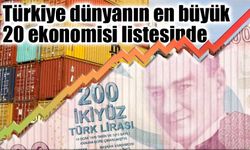Seasonally and calendar adjusted growth, on the other hand, showed a strong double digit increase of 15.6% compared to the previous quarter. While the economy struggled with the contraction and stagnation effect of the coronavirus epidemic, the growth-oriented approach that encouraged loan growth was effective in showing high growth performance in the 3Q20 period.
Looking at the details of GDP; On sectoral basis, financial and insurance activities 41.1%, information and communication activities 15.0%, industry 8.0%, construction 6.4%, agriculture 6.2%, other services activities 6%, real estate activities 2%, public administration, education, human health and social work activities increased by 2.4% and services by 0.8%. The government's final consumption expenditures increased by 1.1% in 3Q20 compared to the same quarter of the previous year as a chained volume index. Consumption expenditures of resident households increased by 9.2% and contributed to high growth. Gross fixed capital formation, a measure of the investment made by businesses, increased 22.5% annually. Exports decreased by 22.4%, while imports increased by 15.8%.
In this period, by supporting loan growth with low interest rates, growth was tried to be balanced, and businesses and consumers were tried to be protected from the epidemic effect. For this reason, financial conditions were kept loose and regulations were applied on banks in order to enable banks to extend loans. This situation was instrumental in recording strong loan growth throughout the summer, but as a side effect of this, price stability was also damaged and inflation expectations deteriorated.
As the 3Q20 period was also a period in which the restrictions regarding the virus outbreak were lifted and the normalization process was operated, firm activities showed a strong recovery compared to the 2Q20 period. While the picture of sectoral data, indicators such as PMI and industrial production points to the strong trend of production activities, service activities will be adversely affected as the virus-induced restrictions come back in the 4Q20 period. Turkey is also bringing back the coronavirus-induced constraints on effective and may extend the content of closures, which may put more pressure on services.
At the same time, with the effect of price stability being prioritized in 4Q20, financial conditions tightened tighten and the demand effect will diminish. This would mean neutralizing the impact from credit growth. The Central Bank has determined the single interest rate of 15% due to high inflation. The ongoing process seems to bring the fight against inflation to the fore in terms of both monetary and economic policies. This will mean that we will not see a growth impact from the credit growth boom in 4Q20 and the following quarters. Although we predict a growth close to 0% for the whole year, there may be slightly below or slightly higher deviation.












